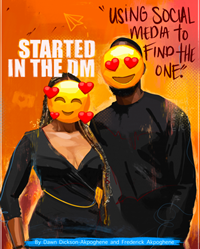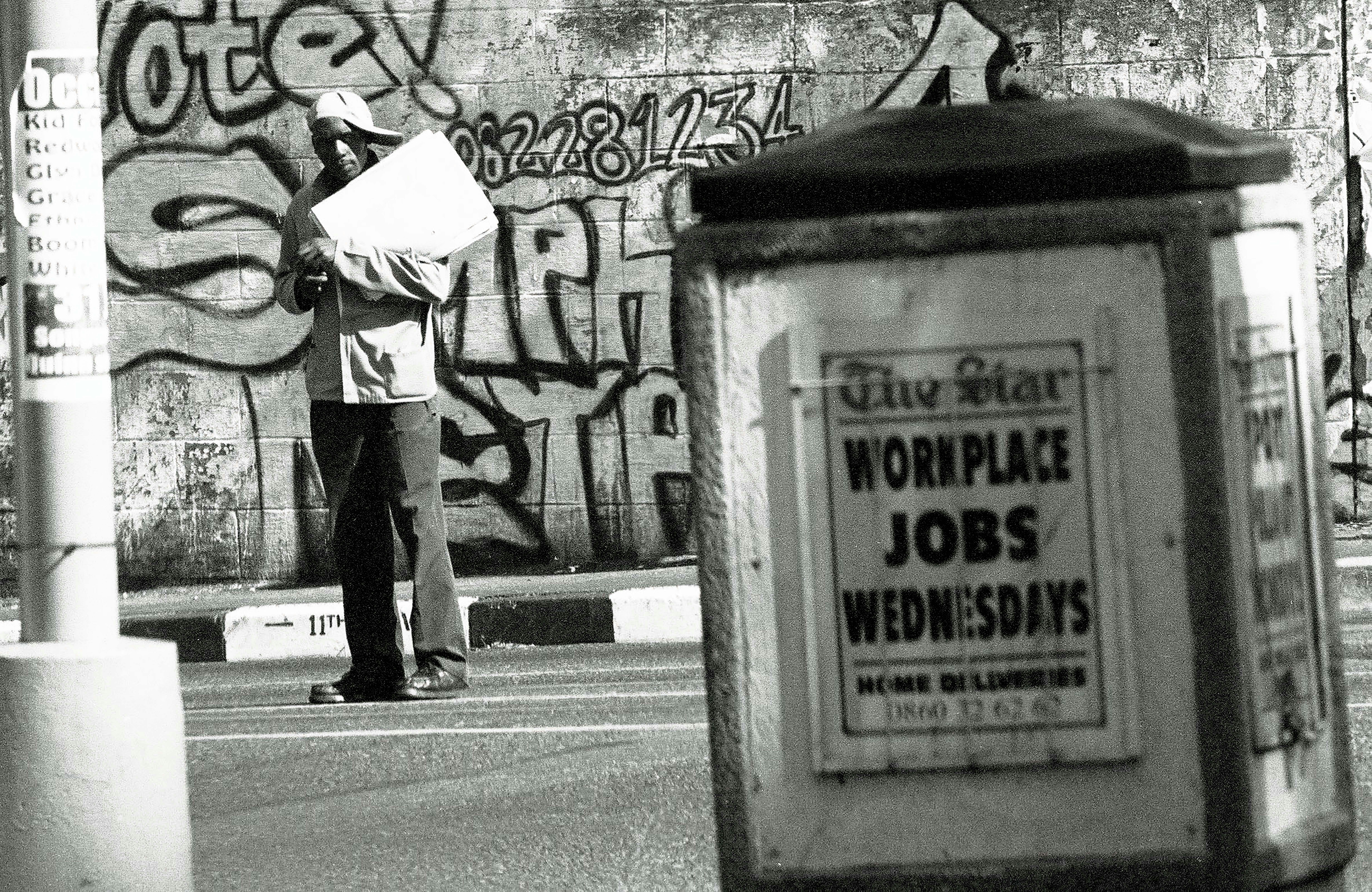
A monument has touched down on the Metropolitan Museum’s rooftop that just a few a long time in the past I might by no means have dreamed of discovering there: an architectural mothership full of a cargo of concepts and pictures encompassing eons of Black American life.
The most recent and among the best within the Met’s 10-year sequence of annual Roof Backyard commissions, the monument was designed by the younger California artist Lauren Halsey. In conceiving it, she has evoked historical kinds discovered within the Met’s Egyptian assortment. She has conjured up the Pharaonic funk and empyreal jazz of George Clinton and Solar Ra. And she or he has streamed in, scorching from the road, the city tradition of the South Central Los Angeles neighborhood the place she grew up and the place she nonetheless lives.
Lastly, she has encapsulated all this richness in a 22-foot-high architectural dice, creating a form area station/sanctuary, open to the sky and to spectacular views of the town and Central Park.
A direct inspiration for the construction would look like the museum’s famed Temple of Dendur, right here reshaped and gotten smaller, flanked by 4 sculptural sphinxes and free-standing columns, its partitions coated inside and outside with low-relief phrases and pictures. However the comparability with an historical Egyptian mannequin solely goes to this point.
A lot of the particular content material in Halsey’s model is up to date and private. The faces of the sphinxes are all portraits of members of her household: her mom, Glenda, her cousin Aujane, her brother Dominic, her life associate, Monique McWilliams. The identical with the columns. They’re all based mostly on a single fourth-century instance on view within the Met’s galleries. However Halsey has changed the photographs of the Egyptian goddess Hathor on the original with likenesses of South Central artist-friends.
The wall inscriptions, hand-incised or reduce in low reduction, are, for probably the most half, native and private too. The place the traditional Egyptians coated the partitions of their tombs and shrines with illustrations from the E-book of the Useless, Halsey and her staff of artists and artisans have created an immersive E-book of On a regular basis Life, one targeted on, however under no circumstances restricted to, up to date Black city existence, evoked and preserved in phrases and pictures carved into a whole bunch of concrete panels.
Halsey, who’s 35, has described herself in interviews as a born archivist, dedicated from the begin to gathering and preserving traces of Black well-liked tradition, previous and current, following an instance set by her history-minded father. After highschool she went to a local people faculty to check structure, realized Photoshop there, and put her information-gathering, to not say hoarding, impulses to work in minutely detailed digital collages.
She continued to provide these, on an ever-expanding scale, as an undergraduate at California College of the Arts. Then, after getting into the MFA program at Yale in 2013, she moved in a 3-D path. Throughout a subsequent residency on the Studio Museum in Harlem, she started carving phrases and pictures on gypsum panels, making a beta model of her first full-scale setting, “The Crenshaw District Hieroglyph Challenge (Prototype Structure),” which would seem within the 2018 biennial exhibition “Made in L.A.” on the Hammer Museum and entice broad consideration.
It was with that exceptional piece that the complete social and political, in addition to the anthropological, intentions of her artwork grew to become clear. Inside a museum context, her walk-in enclosure of panels carved with phrases and pictures harvested from each day life within the Crenshaw part of South Central made the piece a helpful repository of cultural historical past, however a frozen one. Halsey’s objective, in truth, was to reconstruct the piece in public, within the neighborhood itself, making it an accessible and interactive group useful resource and gathering place the place anybody might lengthen and replace a collective historical past by inscribing their very own on the partitions.
For some time it regarded like her intentions could be realized. A Kickstarter marketing campaign she launched was a hit; the Hammer gave her a best-of-show money award. Then COVID-19 hit and Halsey put all her time and assets right into a collaborative public service effort she known as “Summaeverythang,” which offered South Central residents with, amongst different issues, free meals in a really unhealthy time.
Her Met piece is principally an extension, variation and elaboration of the Hammer mission, as its title (all in lowercase) suggests: “the eastside of south central la hieroglyph prototype structure (I).” Once more — as at all times — group is each the supply and the topic of Halsey’s artwork, and references to it unfold over the greater than 700 engraved and sculpted panels that make up the Roof Backyard set up.
Variations of precise current or previous business signage, a lot of it promoting Black-owned companies, recur (Akkeli Black Man Automobile Wash, The Braid Shack, Vanessa’s Constructive Vitality), as do names of grass roots civic organizations (Group Youth Heart Chill Home, Sons of Watts Group Patrol). Terse placard-style statements of protest (Nonetheless No Justice, Reparations Now) alternate with lift-up existential exhortations (Hold the Future Alive, Go for Your Funk, Be Who You Is, Collectively We Can).
All of those phrases, in eye-grabbing typefaces and graffiti fonts, intertwine and overlap with photos associated to style, hair styling, nail-styling, churchgoing and utopian structure, together with Italy’s Superstudio. References to the liberatory, Black-positive, space-is-the-place motion often known as Afrofuturism (alien craft, floating pyramids, superhero figures, spiritual symbols, Parliament-Funkadelic props) are outstanding within the combine. So are photos of things from the Met’s assortment that caught Halsey’s eye throughout her New York analysis forays over the previous two years. (Her fee was initially scheduled to go up in 2022; Covid-related points delayed it.)
These vary from Previous Kingdom busts to ornamental passages she discovered on tomb frescos, to a diagrammatic map of Seneca Village, the early-19th-century largely Black settlement that was initially positioned a brief stroll from the place the Met is now however was leveled to make approach for what grew to become Central Park. (The identical map seems on a wallcovering designed by the artist Njideka Akunyili Crosby for the museum’s ongoing 2021 set up “Earlier than Yesterday We Might Fly: An Afrofuturist Interval Room.”)
Unsurprisingly, given Halsey’s activist apply and rooted loyalties, the Met’s roof backyard is functioning each as a touchdown pad and as a launchpad for her fee. In October, when its Met run is finished, the set up will likely be disassembled, packed up, and despatched to what could be known as its religious house: South Central Los Angeles.
The plan is to have it reconstructed there in a public area to be — what? A group middle that’s additionally a civic monument, that’s additionally a collaborative murals, that’s additionally a historical past guide of a neighborhood that Halsey has seen vanishing earlier than her eyes below the relentless tide of disenfranchisement and gentrification.
It’s the identical tide that worn out Seneca Village and that continues to batter and scatter Black and Brown People coast to coast. So on this sense the Met fee — organized by the artist in session with Sheena Wagstaff, former chair of contemporary and up to date artwork on the Met, and Abraham Thomas, its current curator of contemporary structure, design and ornamental arts — may be very a lot a New York piece too.
And it feels that approach, up there on excessive, with “Cleopatra’s Needle,” the monumental, 3,000-year-old, Met-owned Egyptian obelisk rising to some extent within the park under, and pyramids of all sizes and styles topping Manhattan buildings all over the place you look, in a metropolis of vivacious, ever under-threat Black and Brown neighborhoods, treasured, current and gone.
The Met Roof Backyard Fee: Lauren Halsey
Opens to the general public April 18 by way of Oct. 22, Metropolitan Museum of Artwork, 1000 Fifth Ave., (212) 535-7710; metmuseum.org.






